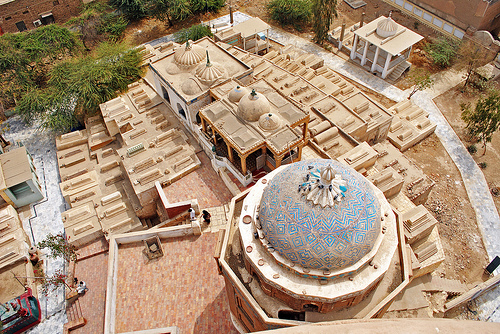Daftar
Jailani, where the Sufi saint, Sheikh Muhiyadeen Abdul Qadir Jilani (d.
1166 CE, in Baghdad), renowned throughout South Asia as the founder of
the Qadiriya order, is by legend said to have meditated for twelve
years. Located along a generalized Muslim pilgrimage route that
stretches northward from the Arabian Sea ports of Galle and Weligama to
the pinnacle of Adam's Peak lies the hermitage shrine.
Jailani
is situated at about 70 km from Adam's Peak, but the terrain is
formidable. Roads daringly engineered by British tea planters wind
part of the way upward from Ratnapura, 60 km away, and Maskeliya, the
most convenient base for climbing the mountain, is a four hour drive
from Jailani. Even more isolating is the ethnic and religious
environment of the shrine: the nearest town is Balangoda, seat of a 96
per cent Sinhalese parliamentary constituency that encompasses the
estate of the Ratwatte family, one of the leading twentieth century
Sinhalese Buddhist political dynasties in the island.
Unlike
dargahs located in historic urban Muslim enclaves, such as Galle or
Beruwala, or village mosques in the Muslim-dominated agricultural
regions of the eastern coast, the shrine at Jailani lies serenely
exposed at the edge of a dramatic granite escarpment 22 km southeast of
Balangoda, flanked
by
wet-zone forested hills and surveying Sinhala Buddhist peasant
resettlement projects on the Kaltota plain below. A small Muslim
community of about thirty families has grown up in the vicinity, but
relations with their Sinhala neighbours have been distant and at times
hostile {Spencer 1990: 38-9, 50-1). It is a wildly beautiful location
set midway up the Kandyan Hills, with a commanding, view southward
toward the coast at Hambantota; a perfect site, it is said, for
meditation and mystical gnosis. Although there are some tombs of local
faqirs and holy men at Jailani, the place is not a mortuary shrine
(dargah) but a hermitage, a place of saintly visitation and mystical
meditation.




_Dargah_Aliya_Jahanpur_Sharief_Ghotki_Sindh_Pakistan.jpg)




